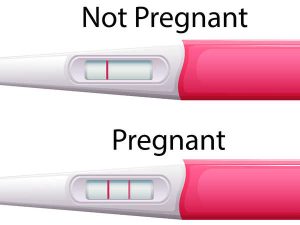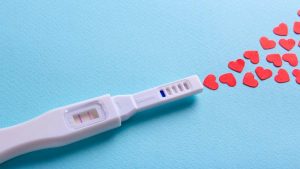If you are trying to conceive, you may have heard about the importance of tracking your fertility. But what does that mean exactly and how can it help you achieve your goal? In this blog post, we will explain what fertility tracking is, why it is beneficial, and how to do it effectively.
What is fertility tracking?
Fertility tracking is the process of monitoring your body’s signs and symptoms that indicate when you are most fertile. Fertility is the ability to get pregnant or to make someone pregnant. It depends on many factors, such as your age, health, lifestyle, and genetics. However, one of the most important factors is your menstrual cycle.
Your menstrual cycle is the monthly series of changes that your body goes through to prepare for a possible pregnancy. It consists of four phases: menstruation, follicular phase, ovulation, and luteal phase. Each phase has different hormonal levels and physical changes that affect your fertility.
Menstruation is the first phase of your cycle. It is when you bleed from your vagina for a few days. This is the shedding of your uterine lining that was built up in the previous cycle but was not needed for a pregnancy.
The follicular phase is the second phase of your cycle. It starts on the first day of your menstruation and lasts until ovulation. During this phase, your pituitary gland releases a hormone called follicle-stimulating hormone (FSH) that stimulates your ovaries to produce one or more eggs. These eggs are contained in small sacs called follicles that grow and mature throughout this phase.
Ovulation is the third phase of your cycle. It is when one of your ovaries releases a mature egg into your fallopian tube. This usually happens around the middle of your cycle, but it can vary from person to person and from cycle to cycle. Ovulation is triggered by a surge of another hormone called luteinizing hormone (LH) that is released by your pituitary gland.
The luteal phase is the fourth and final phase of your cycle. It starts after ovulation and lasts until the end of your cycle. During this phase, the follicle that released the egg transforms into a structure called corpus luteum that produces a hormone called progesterone. Progesterone helps to maintain your uterine lining in case a fertilized egg implants there. If no fertilization occurs, the corpus luteum degenerates and progesterone levels drop, leading to menstruation and a new cycle.
Why is fertility tracking beneficial?
Fertility tracking can help you understand your body better and optimize your chances of conceiving. By knowing when you ovulate, you can time intercourse or insemination to coincide with your fertile window. Your fertile window is the period of time when you can get pregnant or make someone pregnant. It usually lasts for about six days: five days before ovulation and one day after ovulation. This is because sperm can survive in your reproductive tract for up to five days and an egg can be fertilized for up to 24 hours after ovulation.
Fertility tracking can also help you identify any potential problems with your cycle or fertility that may need medical attention. For example, if you have irregular cycles, very long or short cycles, very heavy or light bleeding, severe pain or cramps, or no signs of ovulation at all, you may have an underlying condition that affects your fertility, such as polycystic ovary syndrome (PCOS), endometriosis, thyroid disorders, or infections. By tracking your fertility, you can notice these patterns and seek professional help sooner rather than later.
How to track your fertility effectively?
There are many methods and tools that you can use to track your fertility. Some of the most common ones are:
– Basal body temperature (BBT): This is your lowest body temperature in a 24-hour period. It usually rises slightly (about 0.2 to 0.5 degrees Celsius) after ovulation due to progesterone. You can measure your BBT every morning before getting out of bed using a special thermometer and record it on a chart or an app. A sustained rise in BBT for at least three days indicates that you have ovulated.
– Cervical mucus: This is the fluid that comes out of your cervix (the lower part of your uterus) throughout your cycle. It changes in color, texture, and amount depending on your hormonal levels and fertility. Around ovulation, it becomes clear, slippery, stretchy, and abundant like raw egg white. This type of mucus helps sperm swim and survive in your reproductive tract. You can check your cervical mucus by wiping




